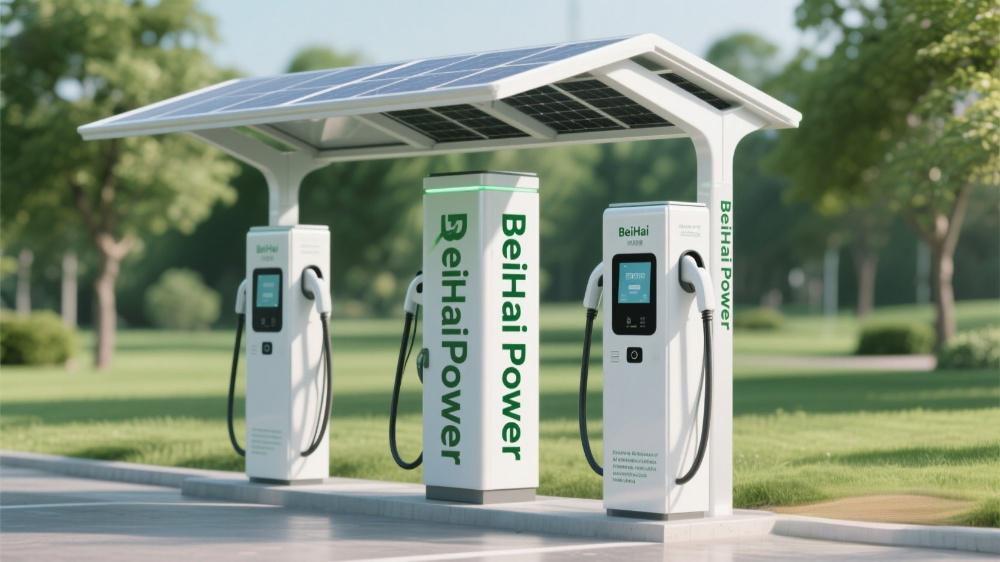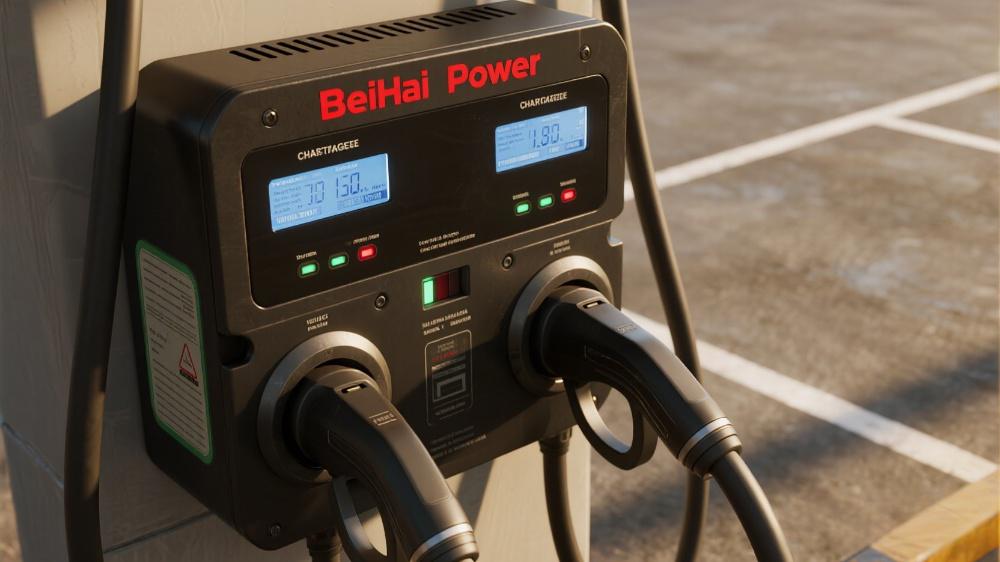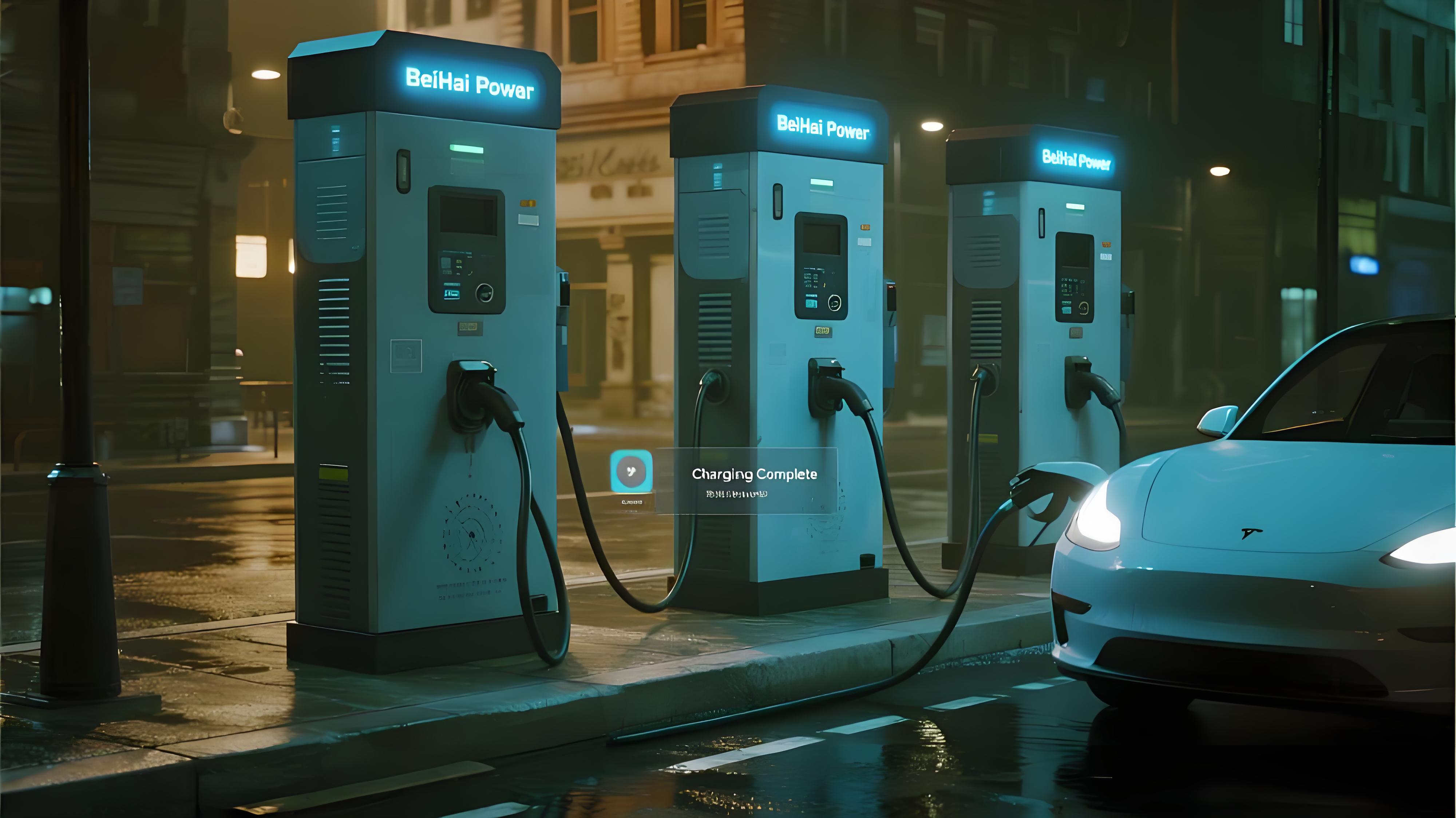The process design of charging piles is optimized
From the structural characteristics of BEIHAI ev charging piles, we can see that there are a large number of welds, interlayers, semi-closed or closed structures in the structure of most ev charging piles, which poses a great challenge to the process design of ev charging Stations. Due to the existence of electrostatic shielding, the traditional electrostatic powder spraying process cannot adhere to the powder layer in the interlayer, weld and cavity structure, resulting in great corrosion hazards. In order to solve this problem, five process design schemes are proposed:

a. Double-layer powder coating system. Bottom coat: epoxy heavy anticorrosive powder 50μm; flour: pure polyester weather-resistant powder 50μm; Total thickness: not less than 100μm.
b. Electrophoresis bottom layer + powder coating system. Bottom coat: electrophoresis 20~30μm; flour: pure polyester weather-resistant powder 50μm; Total thickness: not less than 70μm.
c. Dip coating + powder coating system. Bottom coat: water-based epoxy anticorrosive primer (dip coating) 25~30μm; flour: pure polyester weather-resistant powder 50μm; Total thickness: not less than 80μm.
d. Electrophoresis bottom layer + powder coating system. Bottom coat: electrophoresis 20~30μm; flour: pure polyester weather-resistant powder 50μm; Total thickness: not less than 70μm.
e. Dip coating + powder coating system. Bottom coat: water-based epoxy anticorrosive primer (dip coating) 25~30μm; flour: pure polyester weather-resistant powder 50μm; Total thickness: not less than 80μm.
Key points of the structural design of charging piles
Exterior design: Exterior design is critical to the user experience and acceptability of the charging station. A good electric car charging station exterior design should be modern, clear and ergonomic, as well as in line with urban planning and environmental aesthetics.
Materials of construction: EV charging stations need to be durable and protective, often weather-resistant metals or alloys, and designed to protect against water, dust and corrosion.
Charging socket design: The design of the charging socket should take into account the charging interface of different vehicle models, and support a variety of charging standards, such as CHAdeMO, CCS, Type 2 AC, etc. The socket should be easy to use, with self-locking and safety guards.

Cooling system: Heat may be generated during charging, so an effective cooling system needs to be designed to ensure the stability and safety of the device. This may include fans, heat sinks, etc.
Power distribution system: The charging pile needs to design a reasonable power distribution system to ensure that the power supply can be balanced and prevent the grid from being overloaded when multiple charging points are working at the same time.
Safety design: The charging pile needs to consider the safety of users, including anti-electric shock design, fire safety, lightning protection, etc. In addition, the new energy electric vehicle charging station should also have safety features such as overload protection, temperature protection and short-circuit protection.
Intelligent electronic systems: In order to improve the intelligence level of smart charging stations, advanced electronic systems are required, including functions such as user identification, payment systems, remote monitoring, and fault detection.

Cable management system: The management of the fast charging station cable is also a key design point. Cable storage, waterproofing, theft resistance, and ease of maintenance need to be considered.
Maintainability: Ease of maintenance is also an important design point, considering that charging stations usually need to operate for long periods of time. The modular design and remote fault monitoring can improve the maintainability of charging stations.
Energy conservation and environmental protection: The design of charging piles should focus on energy conservation and environmental protection. Technologies such as energy-saving equipment and solar panels can be used to reduce dependence on traditional energy sources.
These points cover many aspects, from the exterior to the internal system, to ensure that the ev charger can provide convenient charging services while meeting the requirements of safety, stability, maintainability and environmental protection.
Media Contact
Company Name: China Beihai Fiberglass Co., Ltd.
Email: Send Email
Country: China
Website: https://www.fiberglassfiber.com/






